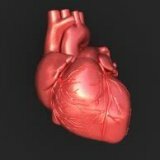Apraxia: what is it, causes, symptoms, treatment, prognosis
Content
- What is Apraxia?
- Signs and symptoms
- Causes
- Affected populations
- Related disorders
- Standard treatments
- Forecast
What is Apraxia?
Apraxia is a neurological disorder characterized by the inability to perform learned (familiar) movements on command, even if the command is understood and there is a desire to perform the movement. The desire and ability to move exist, but a person simply cannot perform an action.
Patients with apraxia are unable to use objects or perform activities such as tying shoelaces, buttoning a shirt, etc. Patients find it difficult to meet the demands of everyday life. Patients with impaired ability to speak (aphasia) but not prone to apraxia can live relatively normal lives; those with significant apraxia are almost always dependent on someone.
Apraxia comes in several different forms:
- Kinetic limb apraxia Is the inability to make precise movements with a finger, hand or foot. An example is the inability to use a pen even though the victim understands what needs to be done and has done so in the past.
- Ideomotor apraxia - inability to perform actions based on external motives or imitation of someone.
- Conceptual apraxia much like ideomotor ataxia, but suggests a deeper malfunction in which the function of the instruments is no longer understood.
- Perfect apraxia Is the inability to create a plan for a specific movement.
- Bucofacial apraxia (sometimes called facial-oral apraxia) is the inability to coordinate and execute facial and lip movements such as whistling, winking, coughing, etc. on command. This form includes verbal or verbal apraxia, possibly the most common form of the disorder.
- Structural apraxia affects a person's ability to draw or copy simple diagrams or construct simple shapes.
- Oculomotor apraxia Is a condition in which patients find it difficult to move their eyes.
Read also:Subarachnoid hemorrhage
It is believed that apraxia occurs as a result of damage to the nerve pathways in the brain that contain the studied patterns of movement. It is often a symptom of neurological, metabolic, or other disorders that may affect the brain.
Signs and symptoms

The main symptom apraxia is the inability of a person to perform movements in the absence of any physical paralysis. The commands for moving are understandable but cannot be executed. When movement begins, it is usually very awkward, out of control and inappropriate. In some cases, movement can occur unintentionally. Apraxia is sometimes accompanied by a person's loss of the ability to understand or use words (aphasia).
Certain types apraxias are characterized by the inability to perform certain movements on command. For example, with apraxia of the cervico-facial region, a sick person cannot cough, whistle, lick their lips or wink when asked. With a structural type of disease, a person cannot reproduce simple patterns or copy simple drawings.
Causes
Apraxia results from a defect in the brain pathways that contain the memory of learned movement patterns. The damage can result from certain metabolic, neurological, or other disorders, that affect the brain, especially the frontal lobe (inferior parietal lobe) of the left cerebral hemisphere brain. This region retains complex three-dimensional representations of previously studied patterns and movements. Patients with apraxia cannot recover these patterns of preserved skilled movements.
Oculomotor apraxia is the dominant genetic trait. The gene for this condition was found on the chromosome 2p13. Each chromosome has a short arm labeled "p", And a long shoulder marked"q». Chromosomes are further subdivided into multiple bands, which are numbered. For example, "chromosome 2p13»Refers to the band 13 on the short arm of the chromosome 2. The numbered stripes indicate the location of the thousands of genes present on each chromosome.
Genetic diseases are defined by two genes, one from the father and the other from the mother.
Read also:Hemangioma of the spine (vertebral angioma): what is it and the treatment of the disease
Dominant genetic disorders occur when only one copy of an abnormal gene is needed for a disease to appear. The abnormal gene can be inherited from either parent, or it can be the result of a new mutation (gene change) in the affected person. The risk of passing the abnormal gene from the affected parent to the offspring is 50% for each pregnancy, regardless of the sex of the child.
Tissue or cellular damage (damage) to other specific parts of the brain, whether as a result stroke or injury, tumors, or dementiamay also cause apraxia. These other locations include the so-called accessory motor area (premotor cortex) or the corpus callosum.
If apraxia is the result of a stroke, it usually diminishes within a few weeks. Some cases of apraxia are congenital. When a baby is born with apraxia, it is usually the result of a malformation of the central nervous system. On the other hand, people with mental impairment (degenerative dementia) can also develop apraxia.
People with a condition of impaired mental functioning (degenerative dementia) may also develop apraxia.
Affected populations
There are few data on the incidence of apraxia. Because apraxia can accompany dementia or stroke, it is more commonly diagnosed in older people.
Related disorders
The following disorder may be associated with apraxia as a secondary characteristic. For differential diagnostics, it is not required:
Aphasia Is a violation of the ability to understand or use language. Usually occurs as a result of damage to the language centers of the brain (cerebral cortex). Affected people may choose the wrong words in conversation and have difficulty interpreting spoken messages. Babies born with aphasia may not speak at all. A speech therapist can assess the quality and degree of aphasia and help educate those people who most often interact with the victim in ways of communication.
Read also:Cervical osteochondrosis, symptoms, treatment with medicines and folk methods, exercises at home
Standard treatments
When apraxia is a symptom of an underlying disorder, the disease or condition must be treated. Physical and occupational therapy can be beneficial for patients with stroke and head injury. When apraxia is a symptom of another neurological disorder, the underlying condition must be treated. In some cases, children with apraxia can learn to compensate for the deficiency as they get older through special education programs and physical therapy.
Speech therapy and special education can be especially helpful in treating patients with speech developmental apraxia.
Forecast
In general, patients with apraxia become addicted, which requires assistance with daily life and at least some degree of observation. Stroke patients may have a stable course and even some improvement.



